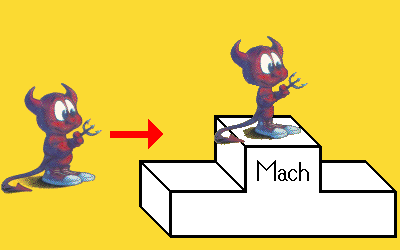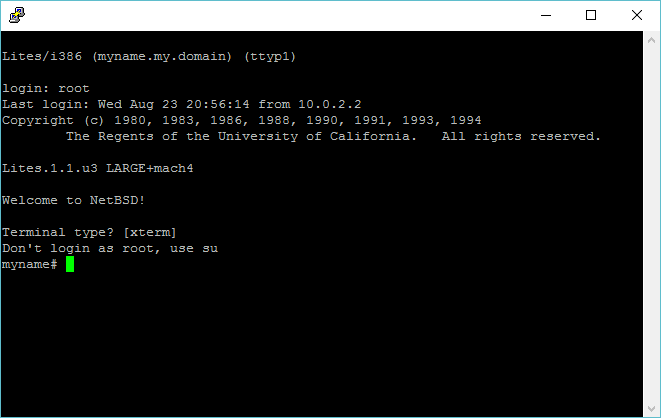Back in the early 1990’s Microkernel’s were all the rage. Everywhere you would go you’d hear all about Pink, Taligent, Windows NT, and the grand daddy of them all Mach.
Probably the most well known debate about microkernel vs monolithic kernels was the Tanenbaum vs Torvalds debate that raged on comp.os.minix back in 1992. You can read the entire thing here : ( http://www.oreilly.com/catalog/opensources/book/appa.html ). It was interesting in the sense that even Ken Thompson of UNIX fame even chipped in. Tanenbaums’s major points were that a microkernel is more inherently portable than a monolithic kernel, and that microkernels could be more reliable, and easier to maintain. Of course more than 10 years later we can see that Linux still flourishes, and that outside of Windows NT & OS X no mainstream OS relies on a microkernel. Even OS X treats mach more as a call library than a traditional microkernel, since all of the exe’s in Darwin / OS X are Mach-O format, not COFF/ELF,A.OUT, etc etc.
Mach started out as a project from CMU derived from the UNIX source code, to try to re-invent the lower levels of UNIX into something that would scale easier to multiprocessors, support for threads, and the holy grail of them all, expand it’s portability. Sadly the first few versions of Mach are barred from distribution due to their inclusion of encumbered UNIX source code. However when the university of Utah picked up Mach, and released Mach4 (UK22, info here http://www.cs.utah.edu/flux/mach4/html/Mach4-proj.html ), including full source. Also they provided Lites, a BSD server that can run atop Mach, giving the user a ‘UNIX’ system, as it were.
So digging through some network groups, and testing stuff, I finally slapped together the pieces, and built a Mach/Lites system on NetBSD 1.1 . And how does it perform? It’s significantly slower than NetBSD is. You can tell that the amount of context switching involved in Mach as a program makes a call the microkernel, which in turn validates & passes it to the server, which further validates, runs the process, then sends the results back to the kernel, which then passes it back to the program. I’ve heard in a worse case scenario a 500% reduction in speed. You can always read more info on the fine wiki article here ( http://en.wikipedia.org/wiki/Mach_kernel ).
Lots of people will argue that microkernel’s have simply failed, and that it’s simply an example of what seemed like a good idea being pushed too hard once it was found to fail. It a lot of ways it reminds me of ADA.
So, for now I’m going to provide a Qemu image of Lites running on Mach 4. unzipping the file will provide you with a lites.cmd file which for windows users you can just run directly. Things to note are:
-The version of Qemu that I’ve bound requires libpcap to be installed.
-Mach4 can only address 16mb of ram, due to DMA issues across the 16mb line.
-I’ve enabled user mode networking so that
-the cmd file sets up local port 23 to be redirected to the VM. This will allow you to telnet in simply by ‘telnet localhost’. You may want to use putty for better terminal handling
-The included GCC 2.4.5 is ancient. Outside of building a simple irc client, I wouldn’t expect much.
-The boot process is broken, and it’ll parse through the rc scripts twice. Just let it do it’s thing, and it’ll drop to a login prompt.
Other than that, it behaves just like a NetBSD 1.1 machine.
Notice that grub boots the kernel /Mach.UK22 . When Mach boot’s it’ll load up the files emulator & startup. The ’emulator’ is the Lites microkernel. Once it’s loaded it’ll start mach_init which just symlinks to /sbin/init and the normal NetBSD bootup will commence.
You can download my image directly here as MachUK22-lites-nat.zip.
Using modern (2022) Qemu I run it like this:
qemu-system-i386.exe -hda lites.vmdk -net none -device ne2k_isa,iobase=0x300,irq=5,netdev=ne -netdev user,id=ne,hostfwd=tcp::42323-:23 -serial none -parallel none
Next time we’ll play with SLS Linux.



Link(s) defunct. Found mirror via Google
http://whom.st/~elizabeth/archives/sites/vpsland.superglobalmegacorp.com/old/install/
Are you sure? There is an IQ and TM test included. Read the returning 40x message carefully!
Interesting mirror, if super ancient. But the links for fine, the whole background story and detailed instructions are in the 404 page 🙂
And it’s gone.
boot seems to hang at “starting network”
Usually I hit control C if its taking too long
Thanks, that works, and I get a login prompt, but I can’t access the machine through telnet. Presumably because it couldn’t bring up the network?
It’s hard to say. You can try pinging 10.0.2.2 to see if that works . I recall that sometimes I had to kickstart the Ip stack it just didn’t pick up arp on its own.
Dmesg doesn’t report the Mach events, you might want one of those game capture programs or something like OBS to capture the boot so you can scroll back the video to see what Mach detects.
I’m not sure what people did back then.
I added the old version of the emulator I was using, and put it on archive.org.
both showed up for telnet, but I didn’t see either initialise the ne2000.